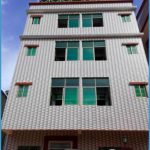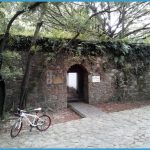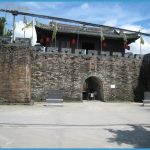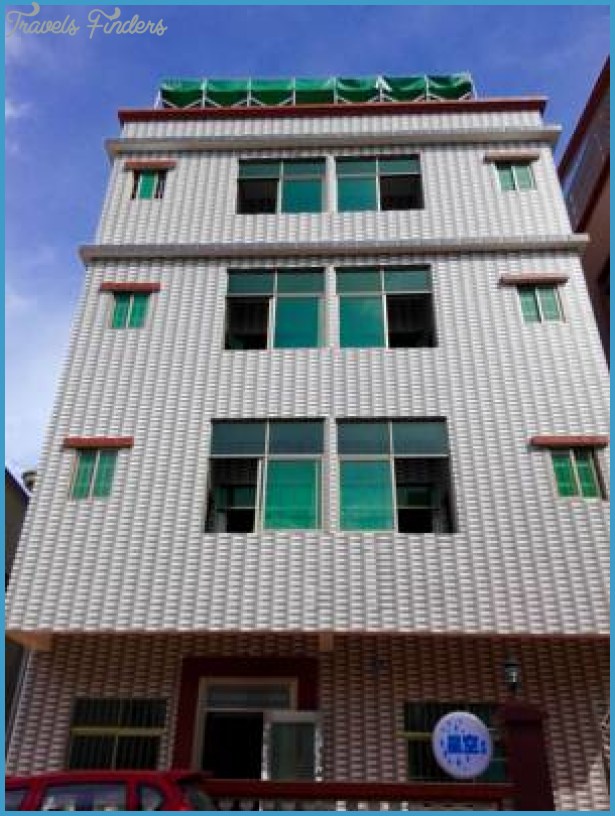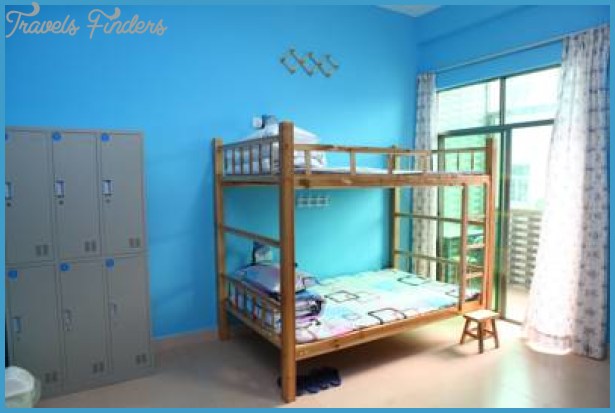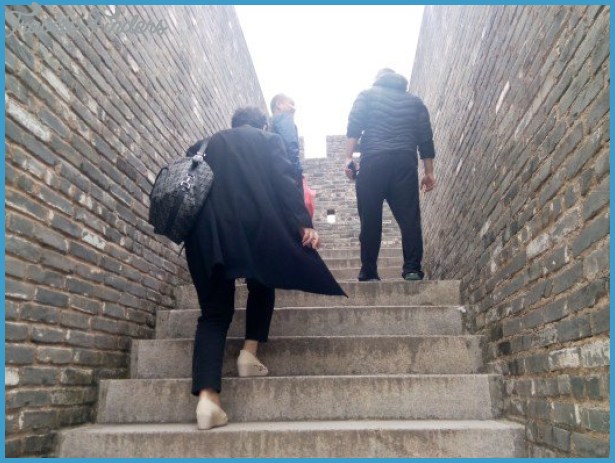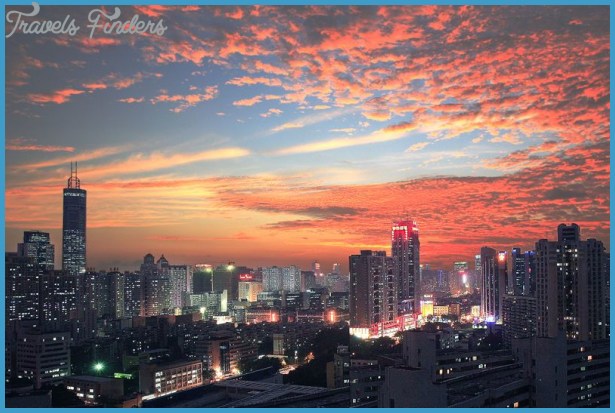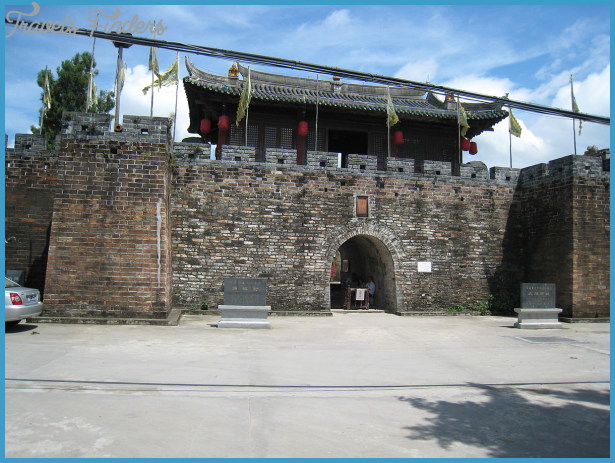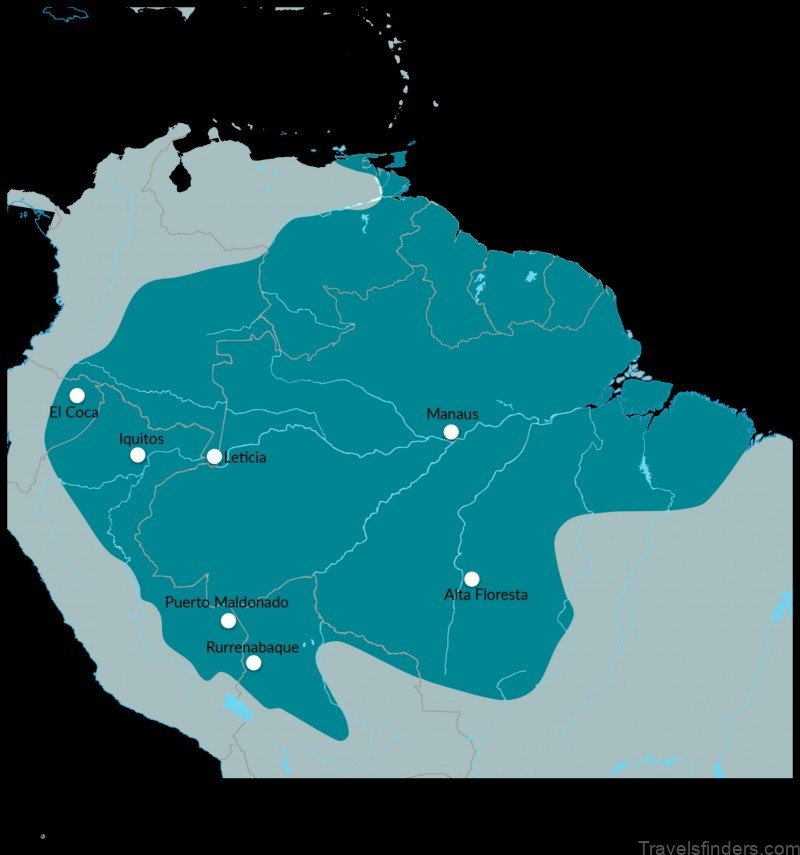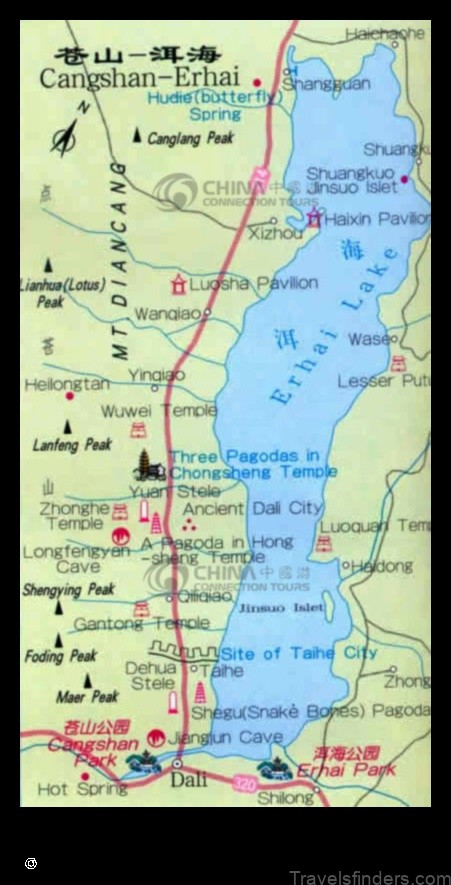A beach weekend is never complete without a good solid cultural outing and, in the cool of the morning, or as the sun begins to lower in the sky, there is no better place on the Dapeng Peninsula to vary the beach experience than Dapeng Fort.
If you’re not already at the Peninsula it’s a ninety-minute bus ride. We can’t think of anywhere else in the Hong Kong-Shenzhen area where you can go through quite so many Ming and Qing Dynasty buildings in such excellent repair. The Ming dynasty walls and gates themselves would merit a visit anywhere in China, and the chance to go through a Qing dynasty general’s house is quite unique. Also, like at Nantou Fort, there is still a living population in the fort, which means that street life remains as it was for generations. On our first visit to the fort, we went to the restored well to the north of the fort. The well had a new windlass and a notice explaining what a well was. But as we were standing there looking at it, a girl came out of one of the adjacent houses, ignored the new windlass, and threw a bucket on a rope into the well and drew water just like her ancestors had been doing for hundreds of years. Just twenty miles from a First World city like Shenzhen, such ancient practices are still common. It won’t last for long. Take advantage of it.
Dapeng was founded in 1394, twenty-six years after Nantou Fort, but with the same objective of controlling piracy. Troop numbers seem to have varied between 400 and about 1000. At various times it came under different jurisdictions including Nantou, Huizhou forty miles to the north, and Humen. It also shared with other forts the duties of left and right defensive flank of the Pearl entrances via Hong Kong. Interestingly, at the time of the Opium War, the right flank was Tung Chung Fort, which still stands in Tung Chung Town near the present Hong Kong Airport.
The cession of Hong Kong to the British marked the first reduction in Dapeng’s defended territory and therefore its importance. In 1898 when the British lease on the New Territories began, most of the territory defended by Dapeng fell under foreign rule and it ceased to be a working fort.
From the beginning of the Shenzhen SEZ, efforts were made to protect and restore Dapeng. In 1995 it was declared a Shenzhen Municipal Centre for Patriotic Education. In 2001 the State Council declared Dapeng to be an important National Cultural Preservation Site. In 2003 it was declared a China Outstanding Historical and Cultural Village and in 2004 it was named as one of the eight great views of Shenzhen.
The main theme of the exhibits is the role of the Fort in fighting foreign, especially British, aggression. There were ten generals in command of the Fort during the Ming and Qing, but seven of them came from two families. These were the Lai family, known as the family of Three Generations, Five Generals and the Liu family, known as the Father-Son Generals family. A lot of the historical displays revolve around these families. General Lai Enjue played a part in the Opium War and one of his descendants, Lai Zhongyuan, joined the Communist Party and fought in the East River Column guerrilla band during and immediately after World War II.
Exhibits of the deeds of these families take up the great proportion of the displays in the Fort, but we found the houses in which the displays were placed every bit as interesting. Lai Enjue’s mansion is an outstanding example of a 18th 19th century mansion. But just walking around the town gives an eerie feel of how life must have been during the Qing Dynasty. The plan is to put all electric wiring underground to emphasise that feel, but, as we write, there are still plenty of wires hanging there. But things are happening at Shenzhen speed and soon they will probably all be gone. The people who still live in the town preserve in their daily lives customs, which disappeared elsewhere one hundred years ago. The village’s dialect Dapeng is a Hakka speaking town is a living fossil full of military and naval terms. Is it a cruel joke of history that the English language, the language of Dapeng’s adversaries during the Opium War, is also full of naval terms.
Many of the exhibits in the fort revolve around events during the Opium War. There is a special display on the Opium War in the mansion of Lai Enjue.
It is interesting to compare Chinese and British accounts of these same events.
The whole matter revolved around the death in 1838 at Tsimshatsui of a Cantonese named Lam Wai-hai during a drunken brawl with six British sailors. The British refused to hand over the culprits to Chinese law. In retaliation, Commissioner Lin Zexu, the Viceroy of Guangdong, made threats, which lead to the whole British population of Macau being evacuated onto ships which then anchored in the Hong Kong Roads.
According to the Chinese version, in 1838, Lin Zexu put Lai Enjue in charge of the Kowloon City fort and gave him three warships to control the Hong Kong Roads. In July the British sent five warships on the excuse of finding food. They attacked. Lai ordered his ships to return fire and the shore battery also opened fire. The British took serious casualties and retreated to Shuishatsui. This was known as the Battle of Kowloon Bay. The Emperor conferred on Lai the Imperial honour of Hurchat Baturu, Manchu for battle hero.
The British version is quite different. Seeing that the besieged British contingent at anchor in the Hong Kong Roads needed supplies, Superintendent of Trade Elliot and his disreputable translator, Rev Karl Gutzlaff, went to Kowloon Bay in search of food. Elliot had a small gunboat, the Pearl, a cutter, the Louisa and small scout boat from the frigate Valage. After lengthy negotiations made it clear that Lin Zexu’s orders not to supply the British would be upheld, Elliot ordered his ships to open fire. A half-hour long engagement followed in which, according to Elliot, the three Chinese warships in Kowloon Bay were badly damaged. Elliot’s small fleet then withdrew to resupply and the Chinese limped into a cove for protection. In the late afternoon, the Louisa and the Pearl again attacked the Chinese ships. At sunset, the officer of the Louisa urged Elliot to allow him to sink the Chinese ships, but Elliot, feeling that British honour had been assuaged, called off the fight. This was the first exchange of the Opium War and was known by the British as the Food Fight.
The Chinese sources also speak of an attack by Lai Enjue in October on a British force in which he sank a two masted ship and a rowboat. We have not been able to find any British references to this fight.
As a result of these encounters, Lai was promoted to lead an anti-pirate flotilla in the seas around Hainan and subsequently to head the naval forces at Humen. He died in 1849.
For his part in the Opium War, Lin Zexu was accused by the Dao Guang Emperor of lying in his reports and was exiled to Xinjiang. The Emperor thundered:
You have lied to us, disguising in your dispatches the true colour of affairs. Instead of helping us, you have only caused confusion to arise. Now, one thousand unending problems are sprouting. You have behaved as if your arms are tied. You are no better than a wooden dummy. As we think about your grievous failings, we become furious, and then melancholy.
The name Dapeng means Great Roc referring to the giant mythical bird, which appears in both Chinese and Arab, legend. It has lent its name to the whole of Shenzhen, which, in poetic terms, is usually referred to as Peng Cheng or Roc City.
Dapeng Ancient Fort is at Dapeng Town on the Dapeng Peninsula. It is a good hour and a half on the freeway via bus no. 360. Eternal East’s Dapeng service from Hong Kong also stops at Dapeng. The fort is five or ten minutes away by car. Negotiating with the taxi brigands at the bus stop in Dapeng has rarely got us a better rate than $20, but if you have a Chinese friend with you, you should be able to do better. The fort is open from 9 am. to 6 pm.
One word of caution. On crowded weekends young men occasionally get carried away with patriotic fervour, especially near the Hong Kong handover memorial outside the Lai mansion and strike aggressive poses when a foreigner passes. Be sensitive to this and try not to do anything, which might be seen as provocative.
Entry: $20
Address: Peng Cheng, Dapeng,
Buses: 360, 364 to Da Peng stop. Change to 818 to He Dian Nuclear Power stop

